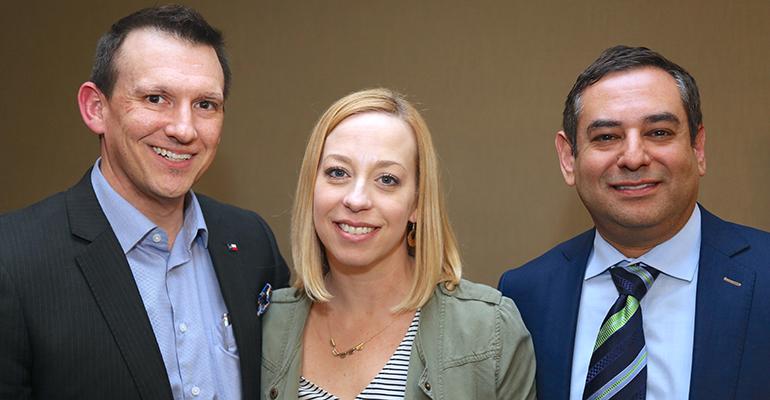Delivery programs remain fraught with potential problems for individual and smaller multi-unit restaurants, but those brands are cracking the code and finding success, participants in a panel at the Greater Dallas Restaurant Association annual meeting said Tuesday.
Successful delivery programs rely on vigilance of the restaurants’ online menus and priceing, effective management of delivery-service orders and workers and an attention to the details of contracts that are negotiated, the panelists said.
“You want to be in control of how your brand is being portrayed to the dining public,” said David Denney, a hospitality lawyer and principal in the Dallas-based Denney Law Group.
Denney was joined by Ernie Quilantan, president of the Greater Dallas Restaurant Association and owner of E-Bar Tex Mex in Dallas, and Megan Santonicola, manager of operations for Cane Rosso, a Neapolitan wood-fired-oven pizza concept with nine units across Texas.
Denney recommended restaurant operators make sure third-party delivery contracts benefit them, including making modifications to limitations of liability in the standard-form contracts.
“We want to modify that,” Denney advised, showing examples of extensive orange-lettered changes in a typical contract. “These are changes I made in agreements to make sure the restaurant is only on the hook if the restaurant killed somebody.
“If the driver goes out and punches someone in the head or takes too long and the food spoils, that’s what we want in there,” he explained. “The contracts are not written for you in their original form.”
Standard contracts can be modified to protect the operators, he said. “Don’t just sign whatever they give you. ... It can’t be an afterthought.”
Denney also recommended restaurant operators routinely “secret shop” their own food to maintain knowledge about how the services or in-house staff succeed in delivering a quality product to the home.
Santonicola said Cane Rosso, which uses third-party delivery services Caviar and Uber Eats, makes sure the employees that interact with the couriers have the skills and latitude to identify and correct problems.
“You really have to empower your staff to stop and make things right in the moment,” she told the group. “And you also have to manage the drivers. Some of them are really pushy. They are in a hurry, I get it.”
Santonicola advised making sure menus and photos that third-party delivery companies post online are correct and up-to-date. “I can’t tell you how upset the customer can get,” she said.
Several of Cane Rosso’s units with higher delivery volumes have hired dedicated workers to oversee delivery orders. Those employees have to be paid at a higher rate, she said, but because they do not get tips.
Quilantan said his E-Bar Tex Mex restaurant created its own internal delivery system and is updating it now with better phone technology. The company uses GrubHub for order referrals, but E-Bar has its own delivery drivers and automobiles.
“We weren’t prepared for the volume of business,” he said. “Our bartenders would take orders over the phone, but it eventually became too cumbersome.”
Quilantan recommends that an operator set up a delivery radius around a unit that is measured in minutes rather than miles in order to help the brand maintain the quality and heat in menu items it sends out the door.
Contact Ron Ruggless at [email protected]
Follow him on Twitter: @RonRuggless





